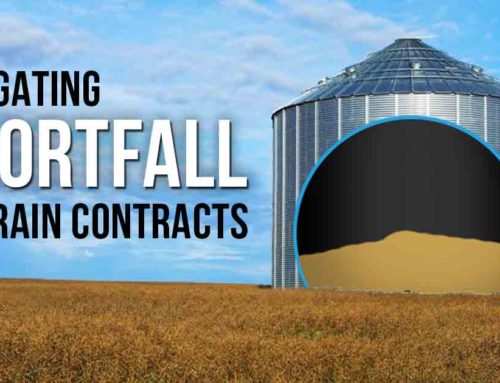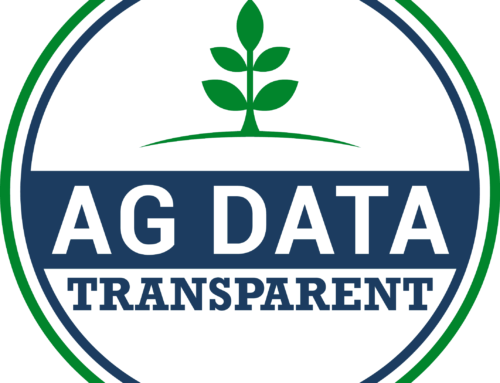There have been recent articles stating that Grain Marketplaces are dead, especially with the recent announcement of Bushel acquiring the GrainBridge assets. In one article, they refer to the lack of viable marketplaces and the pioneers who have come and gone, and others who have pivoted. I couldn’t appreciate that more, but those who claim they are dead or not viable show that you cannot come in and try an Amazon model in an industry you do not know. Agriculture as an overall industry is complicated, and then as you break down the parts of agriculture, it does not become any less complicated.
I think it should be duly noted that GrainBridge never launched a grain marketplace; in fact, they had launched a limited functionality service for delivery times, contract management and posted bids. Some further authors and ag tech influencers have also noted in blog articles that Grain Marketplaces won’t work, ever. With all of that, I think it’s time to share that they can and do work, so stick along for the read (ride).
The challenge with an Ag Marketplace is not if it CAN work, it is with the understanding of HOW it can work.
Candidly, ag marketplaces will not happen if Silicone Valley techies come in and don’t have an understanding of what the current system is and then where to drive out inefficiencies. Taking any of the successful models like Amazon, AirBnB, eBay, Uber, Kayak and trying to jam them into agriculture is a failure unto itself, and trying to make them fit is like taking a square peg and hammering it into a round hole, then saying “it doesn’t work.” Each of those successful services have been successful because they understood their industries and brought solutions to the industry players.
The Grain Marketplace graveyard has many tombstones, and given the recent article by GrainBridge CEO, they now have one there too. The graveyard has a common theme, a lack of holistic understanding of grain movement and the grain market space and entire supply chain. While the companies in the graveyard solved pieces of the issue, they died because they missed business components or for some, they were too ahead of their time and the marketplace. As an example, selling traceability is great: to get an immediate benefit and return it may be best to work into fruits and vegetables, but selling to commodity milling wheat – well, not so much. I am waiting for the day when someone asks where their Kraft Dinner ingredients originated, but we are not there yet. And do not forget that traceability is a first world created issue; for much of the global population in second and third world countries, accessing protein trumps traceability.
An online grain marketplace will emerge, grow, and thrive and in fact IS growing and thriving in Western Canada!
CXN360 is that marketplace. It has over 25% of the cropped acres in Western Canada as signed up members and over 150 grain buying locations in Western Canada. The success of CXN360 is based on the foundation that it addresses many of the issues that arise as barriers in past marketplace attempts. Using a Member Marketplace, both buyer and seller of grain can interact in a transparent and secure environment. The system follows the normal grain buying and grain selling processes addressing who, what, when, where, and how much, all within the service and every offer made between parties needs to include those details or the offer is not completed and sent.
The CXN360 team developed a service that answered key “what’s in it for me?” questions for both farmers and buyers. Farmers access more buyers than their traditional few, knowing these buyers have been vetted and that they are being connected with reputable and established companies. Buyers gain access to more farmers by being on the service and as growers are added, they are available to all buyers to be accessible for bids. More choice, more opportunities.
The marketplace concept does work and will work. There are many suppliers (farmers), and there are many buyers (grain companies, crushers & processors, feedyards, hog barns, feed mills, etc). The successful marketplace will provide an environment for suppliers and buyers to interact and close deals. The successful marketplace in agriculture will be transparent in revealing who is dealing with who and what the terms of the agreement are. As farmers continue to evolve as business managers, they will look beyond the 4-5 buyers their predecessors sold to and look to the larger market opportunities that exist. In fact, look at the plant protein segment and how it has boomed in the last 12 months in Western Canada (https://www.producer.com/markets/new-pea-plant-thrills-growers-2/)
Of note, the online success stories that people refer to, or make comparisons to, had long startup periods:
AirBnB founded in 2007; Amazon 1994; eBay 1995; Uber 2009; and Kayak 2004.
As you can see, those giants have a long history that can be examined deeply, but before everyone goes throwing grain marketplaces out, it would be time to look to those who have had the courage and “stick-to-it-ness”.
The challenge with those who claim that marketplaces are dead are the fact they did not have the fortitude to deep dive the industry. Taking other successful models can work from time to time, but to take any of them and transfer them to ag and place them as either a grain or crop input marketplace and claim it doesn’t work is the easy path. To take and make a grain marketplace you need fortitude. The grain industry does not move fast and does not change fast, but all players know there is a technology play that can and will help them succeed.
As long as farmers are buying grain bins there will always be a need for a marketplace, the right marketplace that serves all parties equally.




